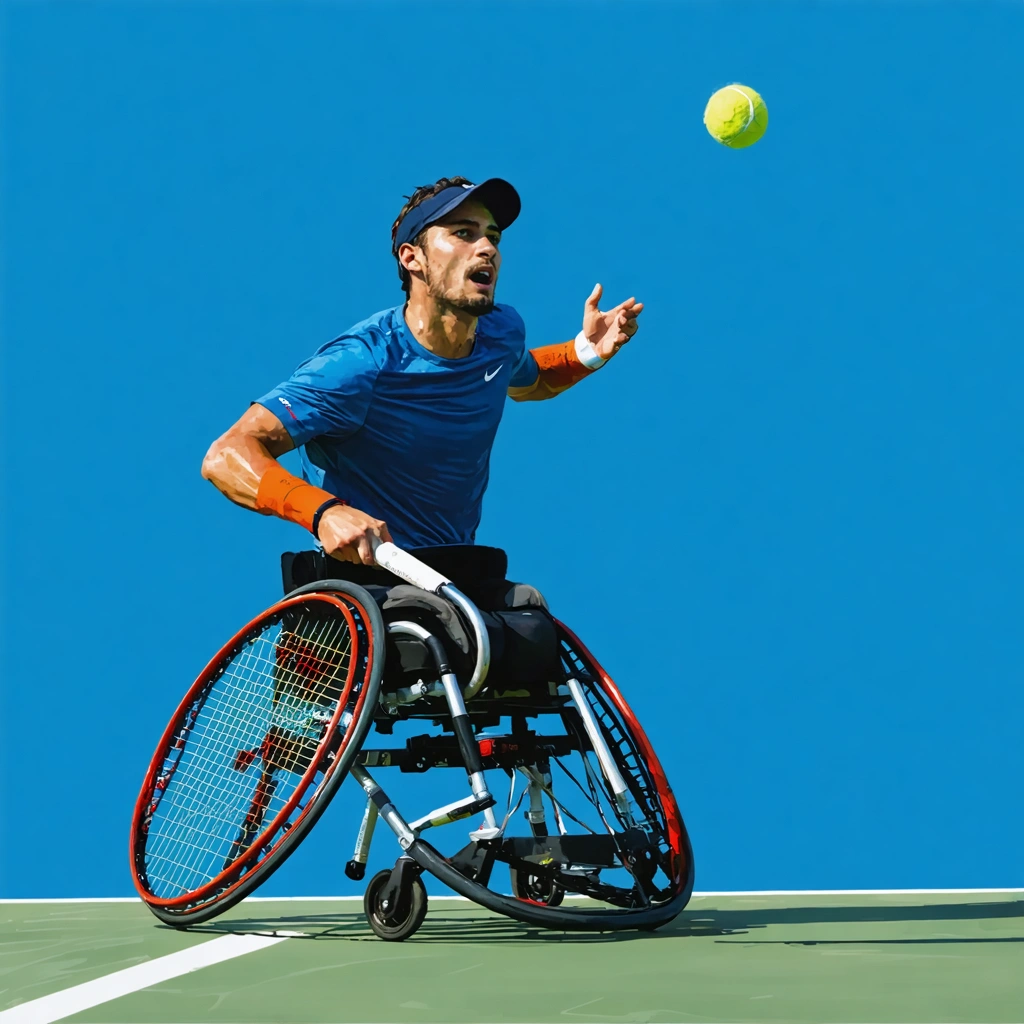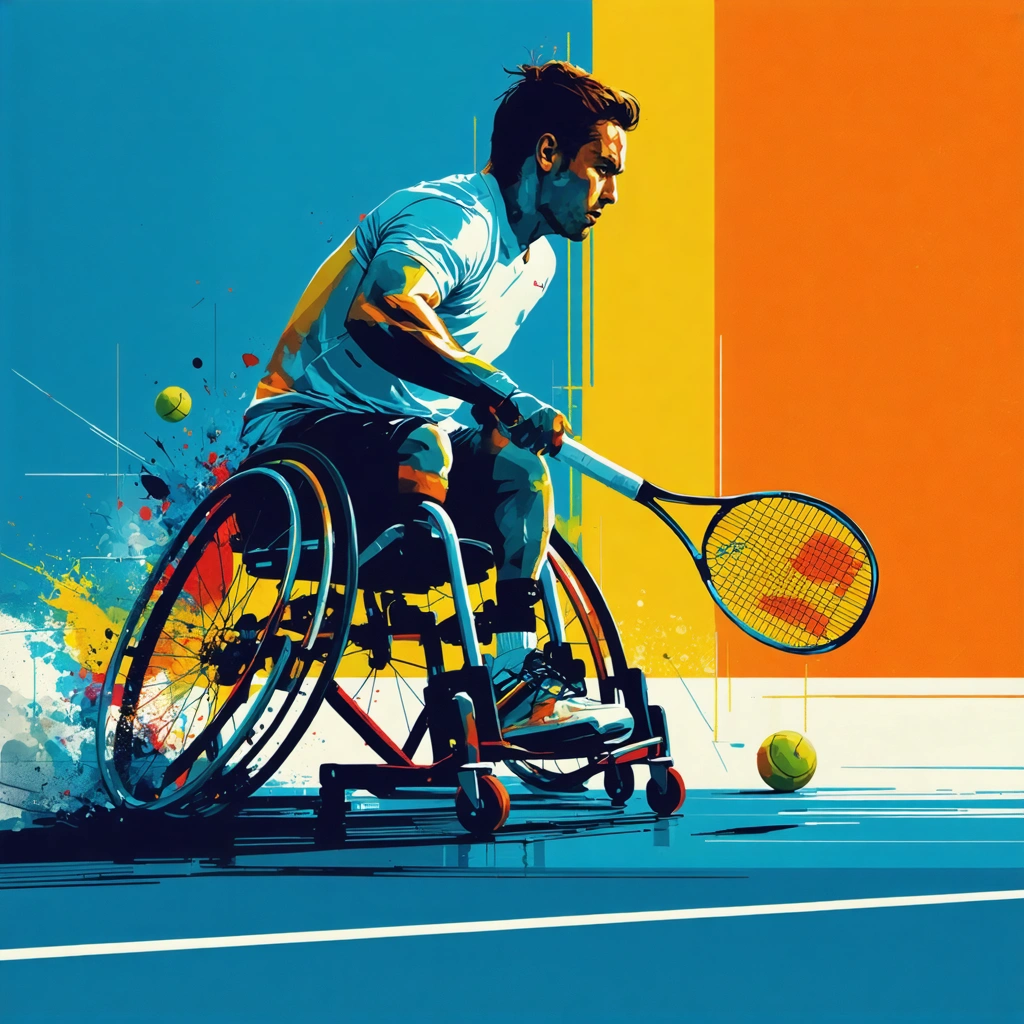When Athleticism Meets Adaptation: The Unique Challenge of Wheelchair Tennis
Imagine the crack of a tennis ball slicing through the air, the rapid pivot of a wheelchair, the sheer determination in the eyes of an athlete who refuses to be defined by limitations. This is the electrifying world of tenis en silla de ruedas paralímpicos — wheelchair tennis at the Paralympic Games — where every serve and volley tells a story of skill, resilience, and unyielding passion. For many sports fans, the Paralympic Games might conjure images of paralympics powerlifting or the explosive bursts seen in paralympics athletics, but wheelchair tennis offers a thrilling spectacle all its own: a blend of tactical finesse, physical endurance, and technological innovation.
Yet, despite its growing popularity, wheelchair tennis still battles for recognition equal to its Olympic counterpart. The challenge isn’t just about the physical demands of mastering a sport while navigating a wheelchair; it’s about overcoming societal misconceptions, limited media coverage, and the complex logistics of competing on the world’s biggest stage. Many casual observers underestimate the sheer athleticism required, mistaking the sport as a lesser variant rather than a fiercely competitive discipline.
Why the World Needs to Pay Attention: More than Just a Game
The Paralympics showcase incredible feats across numerous disciplines — from the raw strength of paralympics powerlifting to the speed and agility displayed in paralympics athletics. But wheelchair tennis uniquely combines elements of both power and precision. It demands not only upper body strength and endurance but also razor-sharp strategy and split-second decision-making. The athletes don’t just play tennis; they redefine what’s possible on wheels.
Consider the mental toughness required to master the dual challenge of maneuvering a chair and executing complex shots, all under the pressure of international competition. This level of precision in motion is not easily achieved. The sport’s adaptive rules, such as allowing the ball to bounce twice, add layers of complexity that highlight the athletes’ innovative techniques and resilience.
However, the broader sports community often overlooks these nuances. Media outlets frequently prioritize more mainstream Paralympic events, leaving wheelchair tennis in the shadows. This lack of visibility contributes to a misconception that the sport is less demanding or less thrilling—an injustice to the athletes who pour years of training, sweat, and heart into every match.
The Rise of Wheelchair Tennis: A Triumph of Skill and Spirit
Thankfully, momentum is shifting. The Paralympic Games have increasingly become a platform where wheelchair tennis can shine alongside the likes of paralympics powerlifting and paralympics athletics. The sport’s rising stars—athletes like Dylan Alcott, Diede de Groot, and Gustavo Fernández—are not just champions; they’re ambassadors advocating for greater recognition and equality.
Their stories are compelling, often marked by early adversity, relentless training, and breakthrough victories that inspire millions. With advanced wheelchair technology, enhanced coaching methodologies, and growing international tournaments, wheelchair tennis is experiencing a renaissance that brings the sport closer to the mainstream.
- Enhanced wheelchair designs improve maneuverability and speed.
- Global tournaments increase competitive opportunities and visibility.
- Media coverage is slowly expanding, spotlighting the sport’s intensity.
As more people witness the athleticism and strategy involved, the appreciation for tenis en silla de ruedas paralímpicos grows. The sport is no longer just a sidebar to paralympics powerlifting or paralympics athletics; it’s a dynamic discipline that deserves its place in the limelight.
What This Article Will Explore
In this article, we’ll dive deep into the world of wheelchair tennis at the Paralympics, unraveling what makes it a spectacular fusion of skill and resilience. We’ll explore the unique rules and adaptations that shape the game, highlight the inspiring journeys of top athletes, and examine how the sport is evolving within the broader Paralympic movement.
We’ll also discuss the challenges wheelchair tennis faces in gaining equal footing with other Paralympic sports like powerlifting and athletics, and what can be done to elevate its profile further. Whether you’re a seasoned tennis fan, a supporter of adaptive sports, or someone newly curious about the Paralympic movement, this exploration will illuminate why wheelchair tennis is truly precision in motion—and why it deserves your attention.

Paralympic Tennis: Precision in Motion – Wheelchair Tennis at the Paralympics Highlights Skill and Resilience
What Is Wheelchair Tennis and How Does It Differ from Traditional Tennis?
Wheelchair tennis is a dynamic and highly competitive sport adapted from traditional tennis, designed specifically for athletes with physical impairments affecting their lower bodies. The primary difference lies in the movement rules: players are allowed two bounces of the ball instead of one, with the second bounce permitted to occur outside the court boundaries. This adaptation, combined with the use of specialized sports wheelchairs, demands exceptional upper body strength, agility, and precision.
Since its introduction into the Paralympics in 1992, wheelchair tennis has grown exponentially in popularity and competitiveness. The sport not only showcases remarkable athleticism but also emphasizes the resilience and strategic thinking of its players, many of whom have inspiring personal stories of overcoming adversity.
Why Is Precision So Crucial in Paralympic Wheelchair Tennis?
Precision in wheelchair tennis is essential because players have to compensate for limited mobility using exact shot placement, spin, and power control. The sport requires athletes to navigate their wheelchairs quickly and effectively while simultaneously executing precise strokes. This balance of mobility and shot accuracy is what makes wheelchair tennis a compelling spectacle of skill.
Moreover, the sport demands intense hand-eye coordination and tactical awareness. Players must anticipate opponents' moves, position themselves optimally, and decide when to attack or defend. This precision differentiates elite Paralympic athletes from recreational players and highlights the high level of training and dedication involved.
How Does Wheelchair Tennis Fit Within the Broader Paralympic Sports Landscape?
Wheelchair tennis is one of many Paralympic sports that celebrate the abilities and competitive spirit of athletes with disabilities. Alongside sports like paralympics powerlifting and paralympics athletics, wheelchair tennis exemplifies the diverse range of physical challenges and skills represented at the Paralympic Games.
Each sport has unique demands:
- Paralympics powerlifting focuses on upper body strength, testing maximal bench press capabilities among athletes with various impairments.
- Paralympics athletics encompasses track, field, and road events, showcasing speed, endurance, and technical skill across multiple classifications.
Wheelchair tennis complements these sports by emphasizing agility, strategy, and precision in a fast-paced, interactive environment. Together, these disciplines provide a comprehensive platform for athletes to demonstrate resilience and excellence, reshaping public perceptions about disability and sport.
Who Are Some Notable Paralympic Wheelchair Tennis Athletes?
The Paralympics have featured many standout wheelchair tennis players who have become icons in adaptive sports. For example:
- Dylan Alcott from Australia, a multiple Paralympic gold medalist and Grand Slam champion, known for his powerful game and advocacy for disability sports.
- Esther Vergeer from the Netherlands, who dominated the sport for over a decade with an unbeaten streak exceeding 470 matches – a testament to extraordinary precision and resilience.
These athletes not only inspire through their performance but also contribute to the growth of wheelchair tennis by raising awareness and increasing participation worldwide.
What Training and Equipment Are Essential for Success in Paralympic Wheelchair Tennis?
Success in wheelchair tennis requires a holistic approach combining specialized training, adaptive equipment, and mental preparation.
- Training: Athletes focus on upper body strength, endurance, wheelchair maneuverability, and tennis-specific skills. Drills often emphasize speed, shot accuracy, and strategic play.
- Equipment: Sports wheelchairs are lightweight, highly maneuverable, and tailored to each athlete’s body and playing style. They have cambered wheels for stability and quick turns, essential for maintaining precision during fast rallies.
- Mental resilience: Given the intense competition and physical demands, psychological training is crucial. Athletes develop focus, stress management, and tactical thinking to perform under pressure.
How Can Fans and Aspiring Athletes Engage with Wheelchair Tennis and Other Paralympic Sports?
There are many avenues for engagement, whether as a fan, volunteer, or aspiring athlete:
- Attend major events like the Paralympic Games or international wheelchair tennis tournaments to experience the sport live.
- Follow athlete stories and updates through social media and Paralympic organizations to deepen understanding and support.
- Join local clubs or programs offering adaptive tennis to try the sport firsthand or support grassroots development.
- Explore related Paralympic disciplines such as paralympics powerlifting or paralympics athletics to appreciate the full spectrum of adaptive sports and find the best fit for personal interests and abilities.
Conclusion: The Impact of Wheelchair Tennis on Paralympic Sport and Society
Wheelchair tennis at the Paralympics beautifully encapsulates precision in motion, showcasing not only the athletic prowess of competitors but also their resilience and determination. By understanding the sport’s unique demands and its place alongside other Paralympic events like paralympics powerlifting and paralympics athletics, we appreciate the broader narrative of adaptive sports breaking barriers and inspiring millions worldwide.

